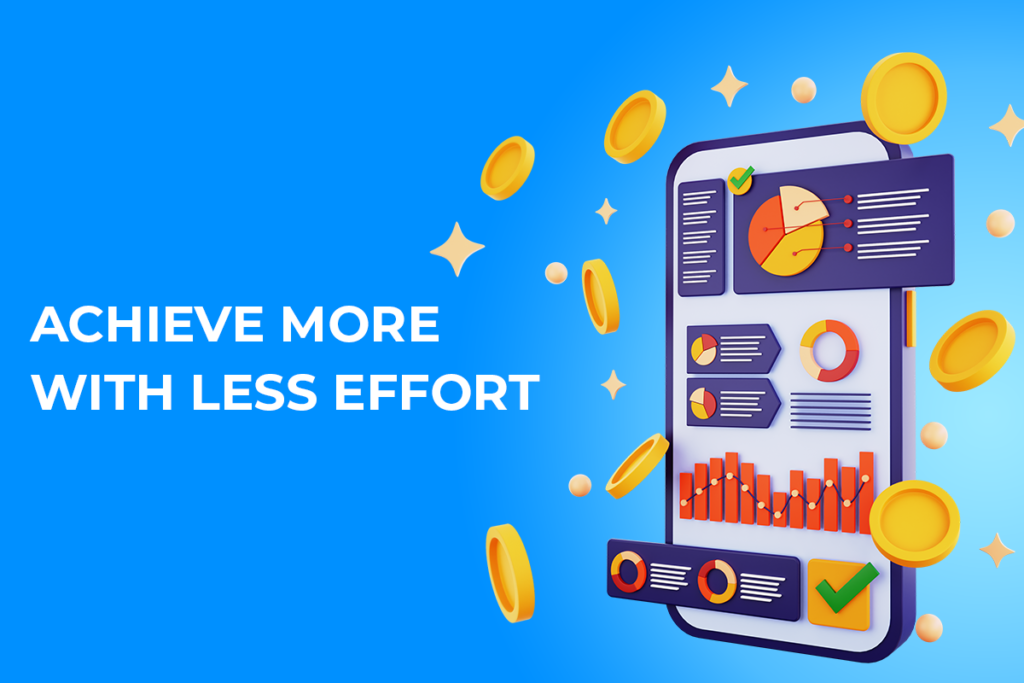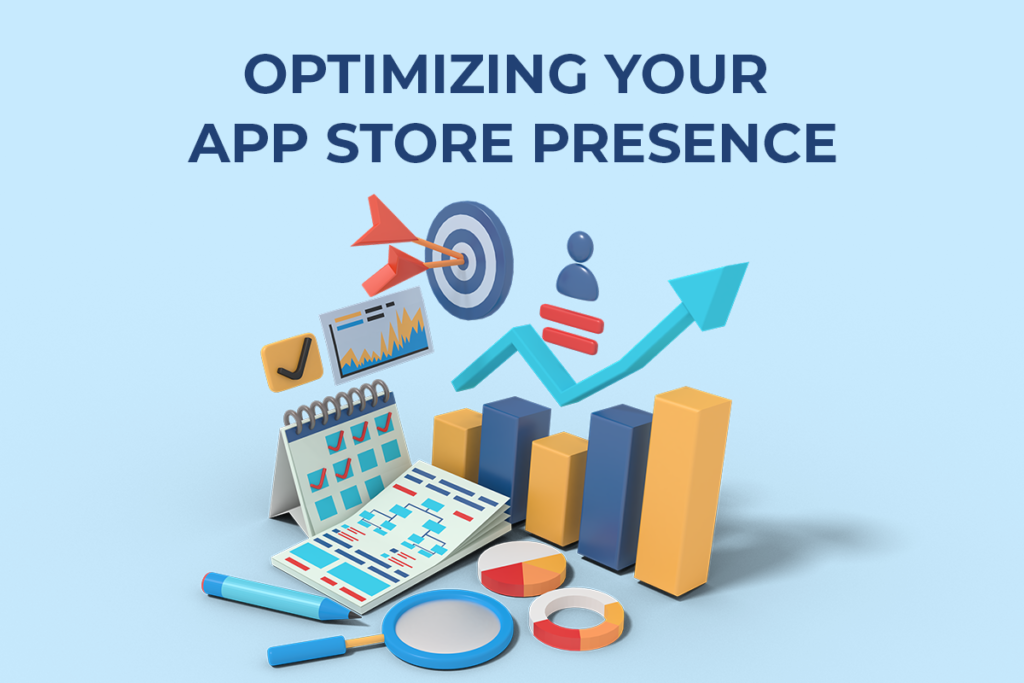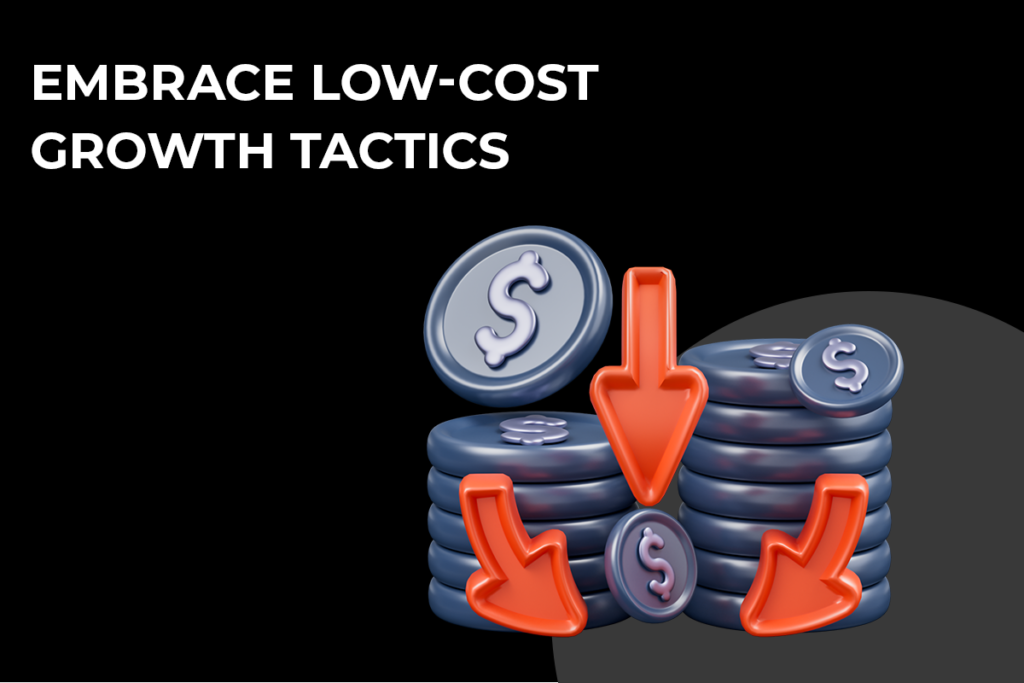
App Marketing on a Budget: Maximizing Results with Minimal Investment
I. Analyze Your Audience
Understanding your target audience is the cornerstone of any successful mobile app marketing strategy. Before launching your campaign, it’s imperative to grasp who your users are, what they enjoy, and how they behave in order to optimize you app marketing budget.
- Start by examining the demographics of your potential users. Look at age, gender, location, and even the type of device they use.
- Analyze behavioral patterns. What times are they active? What motivates them to download an app?
Prioritizing audiences with a higher likelihood of conversion can significantly boost your campaign’s effectiveness.
Moreover, tapping into social listening tools and conducting surveys can be invaluable.
- Social listening allows you to monitor conversations and trends, giving insight into what users demand.
- Surveys can directly capture user preferences and expectations.
This data offers opportunities to tailor your marketing approach to address specific needs.
Next, take a close look at your competition. A detailed analysis can reveal much about what might work for your app.
- Identify competitors with similar apps and study their success metrics.
- Note what marketing strategies they employ and how their audience responds.
Assess both their hits and misses to refine your own marketing tactics, avoiding their pitfalls and capitalizing on their wins to optimize your app marketing budget.
By thoroughly understanding your audience, you’re setting a solid foundation for your mobile app’s growth and retention strategies. With this knowledge, you can move forward with crafting a campaign that resonates with your users, driving both downloads and engagement.
II. Set Goals and KPIs

Setting clear objectives is the bedrock of any successful mobile app marketing campaign. Before launching into action, it’s vital to know what you’re aiming for. Is it increasing the number of app downloads, boosting revenue, or enhancing user engagement? Each goal requires a different approach and tactics, thereby underscoring the importance of clarity in your campaign aims.
To turn these objectives into achievable targets:
- Define specific, measurable goals that resonate with your broader business ambitions.
- Focus on two or three Key Performance Indicators (KPIs) that you can influence effectively.
- Ensure these KPIs are tangible, allowing for easy tracking and assessment.
For instance, if your objective is to improve user engagement, measurable KPIs might include daily active users, session length, or in-app purchases.
Linking your KPIs to the organization’s wider goals is also crucial. This integration:
- Helps in securing necessary buy-in from stakeholders.
- Ensures the allocation of sufficient resources for measurement and optimization activities.
- Aligns marketing efforts with the company’s strategic vision.
For example, if your company’s aim is to become a market leader, an appropriate KPI could be the market share growth rate derived from your app’s user base expansion.
Remember, the statistic-backed performance of KPIs can make or break stakeholder confidence. A Forrester study found that companies who establish clear metrics can improve their market position. This reinforces the importance of selecting KPIs not only with foresight but also with an understanding of their statistical impact on your business.
As you set these goals and KPIs, it is also wise to prepare for the ongoing process of optimization. This preparation entails:
- Being ready to adapt KPIs as market conditions and business strategies evolve.
- Keeping the measurement tools updated to ensure accurate tracking of these vital metrics.
- Prioritizing resource allocation towards the KPIs that have the potential to provide the best returns.
By adhering to these guidelines, app business owners and marketers can embark upon a marketing campaign that is not just intentional but also aligned with the strategic growth objectives of the company. This alignment is paramount for guiding efforts, informing decisions, and, ultimately, determining the campaign’s success.
III. Assess Existing Marketing Assets

Before diving into new strategies, it’s crucial to take stock of what you’ve already accomplished. Reviewing your past and current marketing efforts provides invaluable insights. Here’s how to approach this assessment:
- Review Past Performance: Look at the data from previous campaigns. Analyze which channels and campaigns led to significant user acquisition, retention, and revenue. For example, if a past holiday promotion drove a 30% increase in app downloads, it’s worth revisiting the tactics used.
- Understand Asset Value: Determine which assets still hold value. Some content or creative elements can be repurposed or updated, saving you time and resources. For instance, a well-received app tutorial video might only need minor tweaks to stay relevant.
- Identify Gaps: Recognize where you’re lacking. Maybe you’ve not leveraged video marketing, or your blog content is sparse. Identifying these gaps will guide where to focus new content creation efforts.
Moreover, this process is not just about cutting costs. It’s about maximizing returns on what you’ve already invested in.
- Analyze Channel Effectiveness: Which channels have been most effective? An email campaign with a 40% open rate is a good sign that your audience engages with your emails. Such channels are your best allies moving forward.
- Optimization Opportunities: Look for what can be improved. For example, perhaps some high-performing blog posts could be updated with fresh content to maintain their SEO ranking and user value.
- Reuse with Caution: While reusing assets is economical, ensure they align with current trends and user expectations. A graphic style that was popular two years ago may not resonate with users today.
An asset review can reveal a treasure trove of tools at your disposal. According to a Content Marketing Institute study, 89% of B2B marketers reported success in reviewing and using existing content. This step is about building on what works and learning from what doesn’t, setting the stage for more informed and effective future campaigns.
IV.Optimizing Your App Store Presence

In the competitive realm of mobile apps, your app store presence can make or break your visibility to potential users. Therefore, ensuring that your app’s store page is fully optimized should be a high priority. Here’s how to make your app stand out and attract the audience it deserves:
Articulate Key Benefits
Your app store description is often the first introduction to your app. Keep it concise, but ensure it:
- Clearly states what your app does.
- Highlights its unique selling points.
- Addresses user pain points and how your app solves them.
Moreover, clarity in your value proposition can significantly assist in convincing users that your app is the one they need.
Optimize App Name and Keywords
Your app’s name and the keywords you use are critical:
- Choose a catchy, relevant app name.
- Conduct keyword research to find terms your target audience uses.
- Include keywords in your app title and description for better visibility.
This approach enhances your app’s chances of appearing in search results when potential users are on the lookout for apps like yours.
Boost Discoverability with Imagery
The visual element of your app listing is vital to capture user interest:
- Use high-quality screenshots and videos to showcase the app.
- Highlight the most attractive and useful features visually.
- Ensure graphics reflect the current interface and user experience.
Attractive imagery can instantly grab attention and can be the tipping point for a user to download your app.
Strategic ASO Tweaks
App Store Optimization (ASO) requires ongoing attention:
- Regularly analyze the performance of different keywords.
- A/B test descriptions, icons, and screenshots for the best conversion rates.
- Keep updating your app’s listing based on user feedback and trends.
These incremental improvements can lead to better visibility and higher conversion rates over time.
Remember, your app store presence is an evolving part of your marketing strategy. Just as trends and user preferences shift, so too should your app store listing. By continuously refining and optimizing your app store presence, you’ll not only maintain relevance but also bolster your chances of app success.
V. Embrace Low-Cost Growth Tactics

Embracing low-cost growth tactics can be a game-changer for app businesses operating on a shoestring budget. Here’s how you can leverage such tactics to fuel your app’s growth:
- Integrate Referral Channels:
- Implement a referral program that incentivizes current users to share your app with friends and family.
- Offer rewards like in-app currency, premium features, or discounts to encourage participation.
- Make sharing easy with built-in referral links or codes within your app’s interface.
- Email Collection Strategies:
- Capture email addresses at sign-up or during in-app events to build your marketing list.
- Use pop-ups or prompts at strategic moments when user engagement is high.
- Ensure you’re providing value in exchange for their contact information, such as exclusive content or offers.
- Push Messaging:
- Employ push notifications to keep users engaged and informed about updates or offers.
- Personalize messages based on user behavior to increase relevance and effectiveness.
- Be mindful of the frequency to avoid overwhelming your users and causing uninstalls.
Moreover, influencer marketing can open doors to new audiences without breaking the bank:
- Engage Platform Enthusiasts:
- Identify influencers who genuinely enjoy and use apps similar to yours.
- Collaborate with them to create authentic content that showcases your app’s features.
- Negotiate fair compensation or offer other forms of value, such as exclusive access or co-creation opportunities.
- Leverage Niche Voices:
- Tap into niche communities where your app’s target audience congregates.
- Find micro-influencers who align with your app’s niche and values.
- Their smaller, but highly engaged, following can lead to higher conversion rates.
Finally, don’t overlook the power of efficient channels:
- Social Media:
- Share engaging content related to your app on platforms where your audience hangs out.
- Use hashtags, participate in trends, and interact with users to increase visibility.
- Track engagement to see which platforms and content types resonate most with your audience.
- Organic Search:
- Optimize your website and content for search engines to attract users seeking apps like yours.
- Create valuable content that addresses user queries and includes clear calls-to-action.
- Monitor search rankings and adjust your strategy based on performance data.
- Communities/Forums:
- Join online communities and forums relevant to your app’s industry or theme.
- Participate in discussions, offer expertise, and subtly promote your app without spamming.
- Build relationships with community members to foster trust and app advocacy.
By focusing on these low-cost growth tactics, you can efficiently expand your user base and enhance your app’s presence in the market. Always remember to track the results of these efforts to refine and perfect your approach over time.
VI. Monitor and Optimize Efforts

Monitoring and optimizing your app marketing efforts is crucial for sustainable growth. It’s not enough to set a plan in motion and hope for the best. Instead:
- Employ an effective measurement framework. This should link back to the KPIs you’ve established. Are you aiming to track user engagement? Measure it with the right tools and metrics.
- Consistently collect data. Regularly look at the analytics that apply to your KPIs.
After setting up a solid measurement foundation, it’s time to delve into the nitty-gritty:
- Track marketing performance consistently. Which blog posts are generating the most traffic? Which ad campaigns are leading to installs?
- Use a variety of analytics tools. They should give you insights into different aspects of your campaign’s performance.
Furthermore, assessing your results allows you to make informed decisions:
- Identify what content resonates with your audience. Are tutorial videos leading to longer app sessions or more shares on social media?
- Pinpoint which channels are most effective. Maybe your Instagram stories are driving more engagement than your tweets.
Lastly, it’s about refining your strategy with what you learn:
- Pause underperforming efforts. If a particular channel isn’t driving results, reallocate your app marketing budget and focus.
- Double down on what works. Is a specific type of push notification driving high re-engagement? Use it more.
By following these steps, you create a cycle of improvement. With each iteration, you’re driving your app towards greater success. Keep your audience engaged, your goals clear, and your strategy flexible. This way, you maximize the impact of your app marketing efforts.
Conclusion
In conclusion, mastering mobile app marketing demands a deep understanding of your audience, clear objectives, and an inventory of your current assets. By studying your audience’s demographics, behaviors, and preferences, and aligning your goals with measurable KPIs, you set the stage for targeted, effective campaigns. Evaluating your existing marketing assets ensures you’re building on a solid foundation, identifying gaps, and optimizing what already works.
Optimizing your app store presence is a continuous process that can significantly increase visibility and downloads. Combine this with embracing low-cost growth tactics, like referral programs, push notifications, and community engagement, to expand your reach without straining your app marketing budget. Lastly, the power of data cannot be overstated. Regularly monitor and optimize your marketing efforts to refine your strategy, ensuring that each action taken propels your app towards its growth goals. By weaving together these elements—audience insights, strategic goals, asset leverage, store optimization, cost-effective tactics, and continuous improvement—your app marketing campaign is poised for success.
Please feel free to Contact Us in case you need any guidance regarding your app marketing needs.
FAQ: Effective Mobile App Marketing on a Budget
How can I understand my mobile app’s target audience on a budget?
Begin by analyzing available demographic data such as age, gender, and location which can often be found in your app’s analytics platform. Use free social listening tools to monitor conversations and identify trends. Surveys can be conducted at little to no cost through your app or social media channels to gather direct user feedback. These steps help tailor your marketing approach without incurring significant expenses.
What are some low-cost marketing tactics that can help grow my app?
Consider implementing a referral program to leverage word-of-mouth, collect emails for direct marketing, use push notifications to keep users engaged, and engage with niche influencers or communities. Additionally, optimize your presence on social media and ensure your content is SEO-friendly to attract organic search traffic.
How do I optimize my app store listing for better visibility?
Focus on articulating the key benefits of your app in the description, optimize your app name and keywords for search, and use high-quality imagery to showcase your app’s features. Regularly A/B test different elements of your listing and update it based on user feedback and market trends.
What are the best KPIs to track for a mobile app marketing campaign?
The best KPIs will depend on your specific campaign goals. For user acquisition, you might track app downloads and user sign-ups. For engagement, look at daily active users, session length, or in-app purchases. Always ensure that these KPIs align with your broader business objectives.
How do I set measurable goals for my app marketing campaign?
Define specific, measurable, achievable, relevant, and time-bound (SMART) goals that align with your business objectives. Choose two or three KPIs that directly reflect these goals, such as conversion rates or growth in active users, and focus on tracking and improving these metrics.
How can I assess the effectiveness of my existing marketing assets?
Review past campaign data to determine which efforts led to user acquisition, retention, and revenue. Evaluate which assets can be repurposed and identify gaps in your current strategy. Assess the effectiveness of different marketing channels and look for optimization opportunities.
Can I still engage in influencer marketing with a limited app marketing budget?
Yes, by collaborating with micro-influencers or enthusiasts who have a smaller but more engaged following, you can benefit from influencer marketing without a large expenditure. Offer fair compensation or other forms of value, such as exclusive access or the opportunity to co-create content.
What are some strategies for capturing email addresses within my app?
Use sign-up prompts or pop-ups at strategic moments of high user engagement, like after achieving a milestone or completing a tutorial. Offer value in return, such as discount codes or access to exclusive features, to encourage users to share their contact information.
How often should I update my app store listing for optimal results?
Your app store listing should be reviewed and updated regularly, at least every few months, to ensure it reflects the latest user feedback, app updates, and market trends. Frequent optimization ensures that your app remains relevant and appealing to potential users.
What are some effective channels for community engagement to promote my app?
Online communities and forums related to your app’s industry or theme are great places to start. Participate in discussions, offer expertise, and promote your app subtly. Platforms like Reddit, Quora, and specialized Facebook groups can be particularly effective if you engage authentically and provide value to the conversation.




0